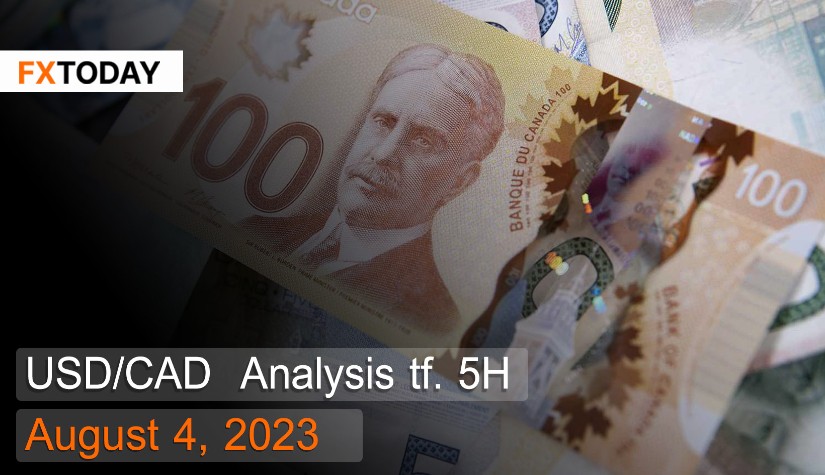The economy of Canada remains sluggish even though the inflation rate has decreased.
The Canadian dollar has started to weaken again over the past few days, with Canada's inflation figures decreasing rapidly. This decline could be seen as a positive sign that the Bank of Canada (BoC) may not need to accelerate interest rates significantly. However, even so, the 25 bps interest rate hike this month will be focused on controlling the potential currency exchange rate volatility that could occur if interest rates rise too quickly.
Karl Schamotta, Chief Market Strategist at Corpay, stated, "While inflation has decreased rapidly, the ongoing momentum could lead several sectors to soften again. Increasing interest rates would raise borrowing costs, impacting both the production and service sectors."
In the United States, the inflation rate has also been consistently decreasing, with expectations of continuous economic recovery. This recovery in the US will benefit Canada, especially concerning oil exports, a significant Canadian export commodity. Additionally, the future price for US crude oil has risen by 0.6% to 80.58 US dollars per barrel.
Canada's Manufacturing PMI increased to 49.6 in the previous month from 48.8 in June, surpassing market expectations of 48.9. While this uptick suggests improvement, rising interest rates have led to a rapid increase in operational costs, thereby pressuring the manufacturing sector. Unpredictable business factors have also prompted several companies to adopt cautious procurement strategies and reduce staffing levels.
Canada's unemployment rate is consistently rising, reaching 5.4% in June, higher than the anticipated 5.3%. This figure surpasses levels seen even during the COVID-19 pandemic, with the number of unemployed individuals reaching 1.15 million, and a continuous upward trend contrasting with decreasing hiring.
Furthermore, Canada's 10-year government bond yield has surged beyond 3.7%, marking the highest yield in 15 years. This increase in yields is a result of Fitch's credit rating downgrade for the United States, alongside expectations of an interest rate hike by the Bank of Canada this month.
Techical analysis data (5H)
Resistance: 1.3374, 1.3386, 1.3402
Support: 1.3346, 1.3330, 1.3317
Source: Investing.com
| Name | S3 | S2 | S1 | Pivot Points | R1 | R2 | R3 |
| Classic | 1.3317 | 1.3330 | 1.3346 | 1.3358 | 1.3374 | 1.3386 | 1.3402 |
| Fibonacci | 1.3330 | 1.3340 | 1.3347 | 1.3358 | 1.3369 | 1.3376 | 1.3386 |
| Camarilla | 1.3354 | 1.3357 | 1.3359 | 1.3358 | 1.3365 | 1.3367 | 1.3370 |
| Woodie's | 1.3319 | 1.3331 | 1.3348 | 1.3359 | 1.3376 | 1.3387 | 1.3404 |
| DeMark's | - | - | 1.3352 | 1.3361 | 1.3380 | - | - |
Buy/Long 1: If there is a touch of the support level within the price range of 1.3330 - 1.3346, but it fails to break the resistance at 1.3346, consider setting a TP around 1.3386 and a SL around 1.3317 or based on an acceptable level of risk.
Buy/Long 2: If the resistance level within the price range of 1.3374 - 1.3386 is successfully broken, you might consider setting a TP around 1.3402 and a SL around 1.3330 or based on an acceptable level of risk.
Sell/Short 1: If there is a touch of the resistance level within the price range of 1.3374 - 1.3386, but it fails to break the support at 1.3374, you could think about setting a TP around 1.3330 and a SL around 1.3402 or based on an acceptable level of risk.
Sell/Short 2: If the support level within the price range of 1.3330 - 1.3346 is successfully broken, you might consider setting a TP around 1.3317 and a SL around 1.3386 or based on an acceptable level of risk.
| Name | Value | Action |
| RSI(14) | 69.489 | Buy |
| STOCH(9,6) | 75.576 | Buy |
| STOCHRSI(14) | 68.880 | Buy |
| MACD(12,26) | 0.004 | Buy |
| ADX(14) | 57.377 | Buy |
| Williams %R | -1.695 | Overbought |
| CCI(14) | 111.8813 | Buy |
| ATR(14) | 0.0028 | Less Volatility |
| Highs/Lows(14) | 0.0035 | Buy |
| Ultimate Oscillator | 62.101 | Buy |
| ROC | 0.745 | Buy |
| Bull/Bear Power(13) | 0.0061 | Buy |
|
Buy:10 Sell:0 Neutral:0 Summary:Strong Buy |
||
















